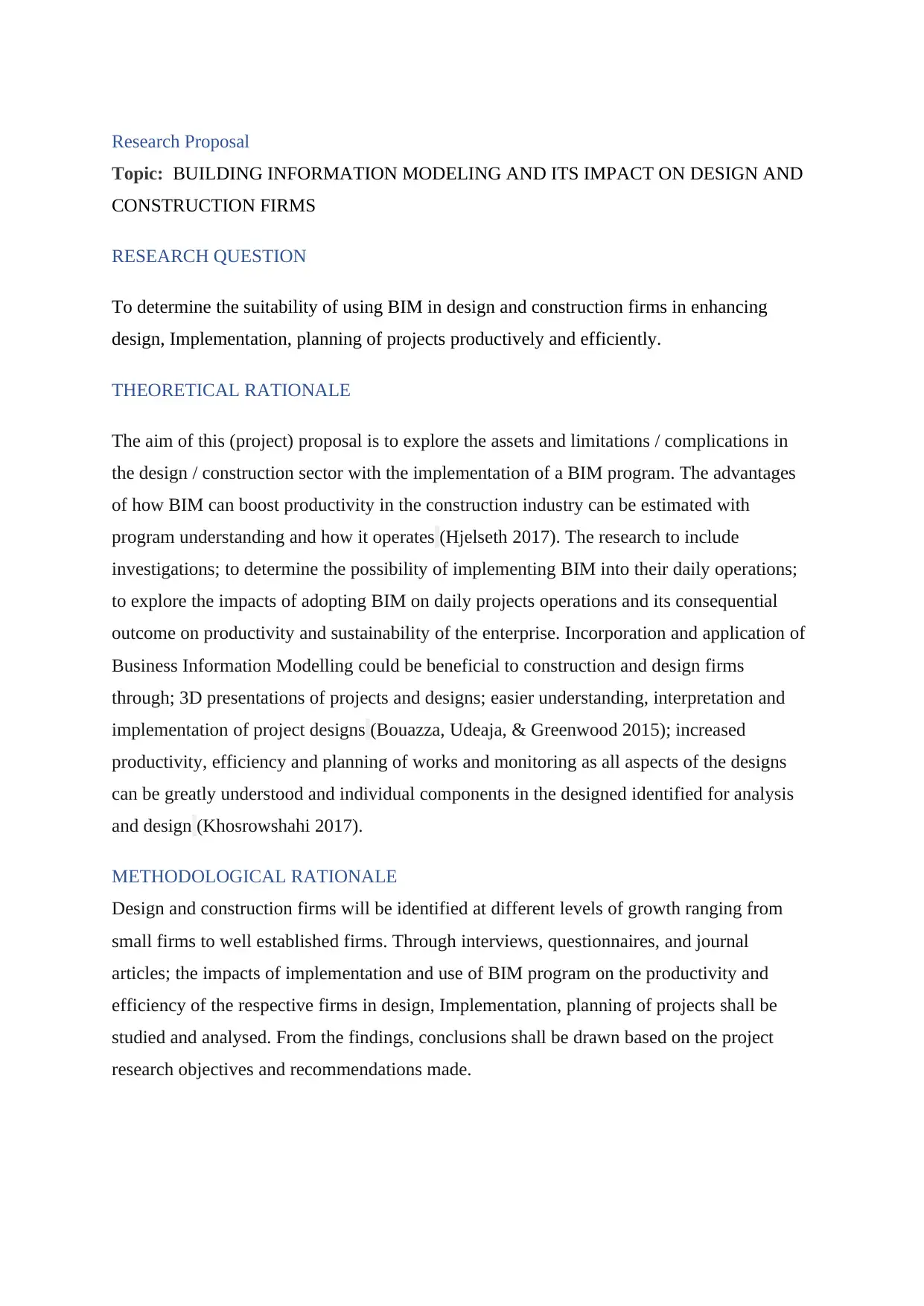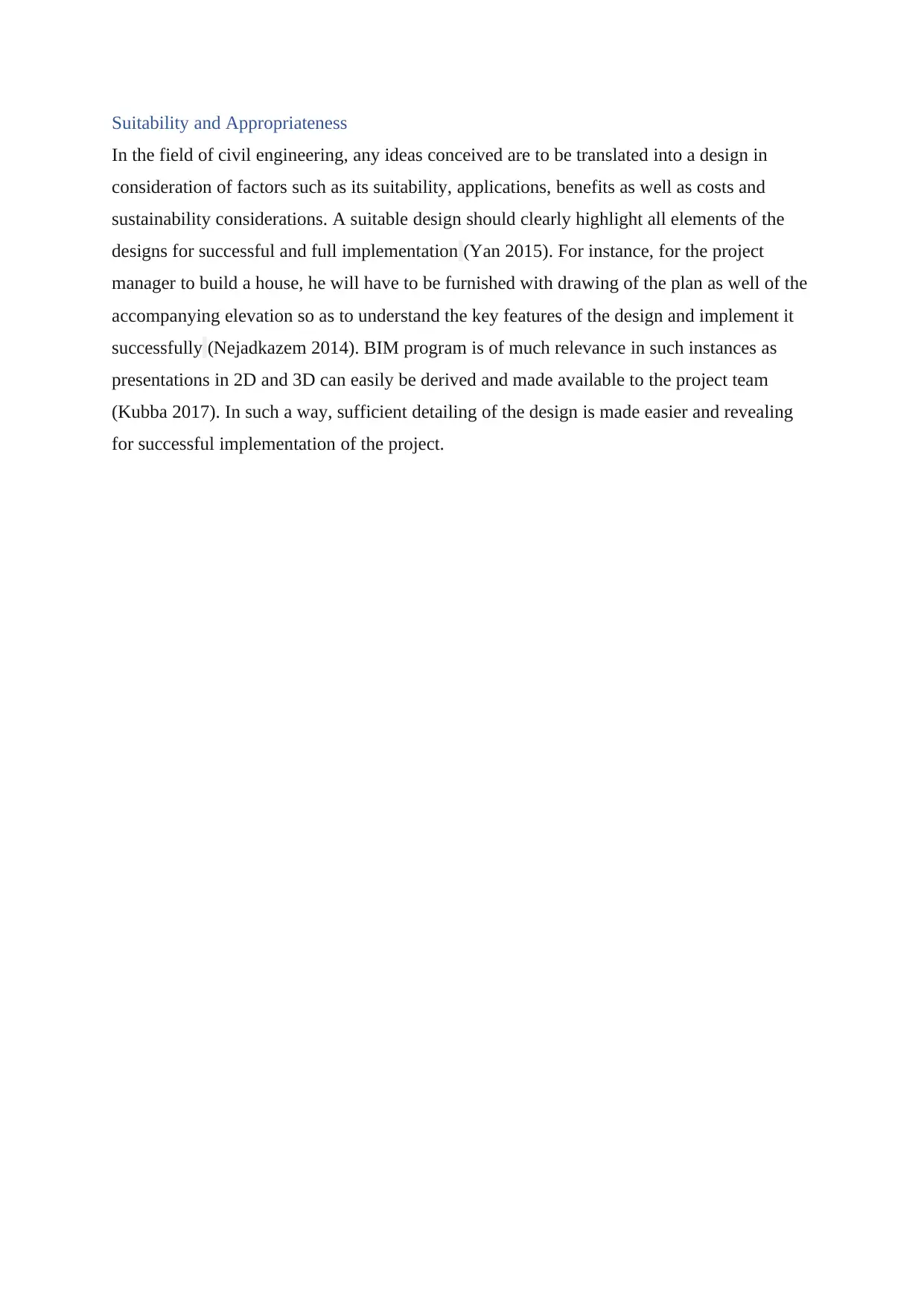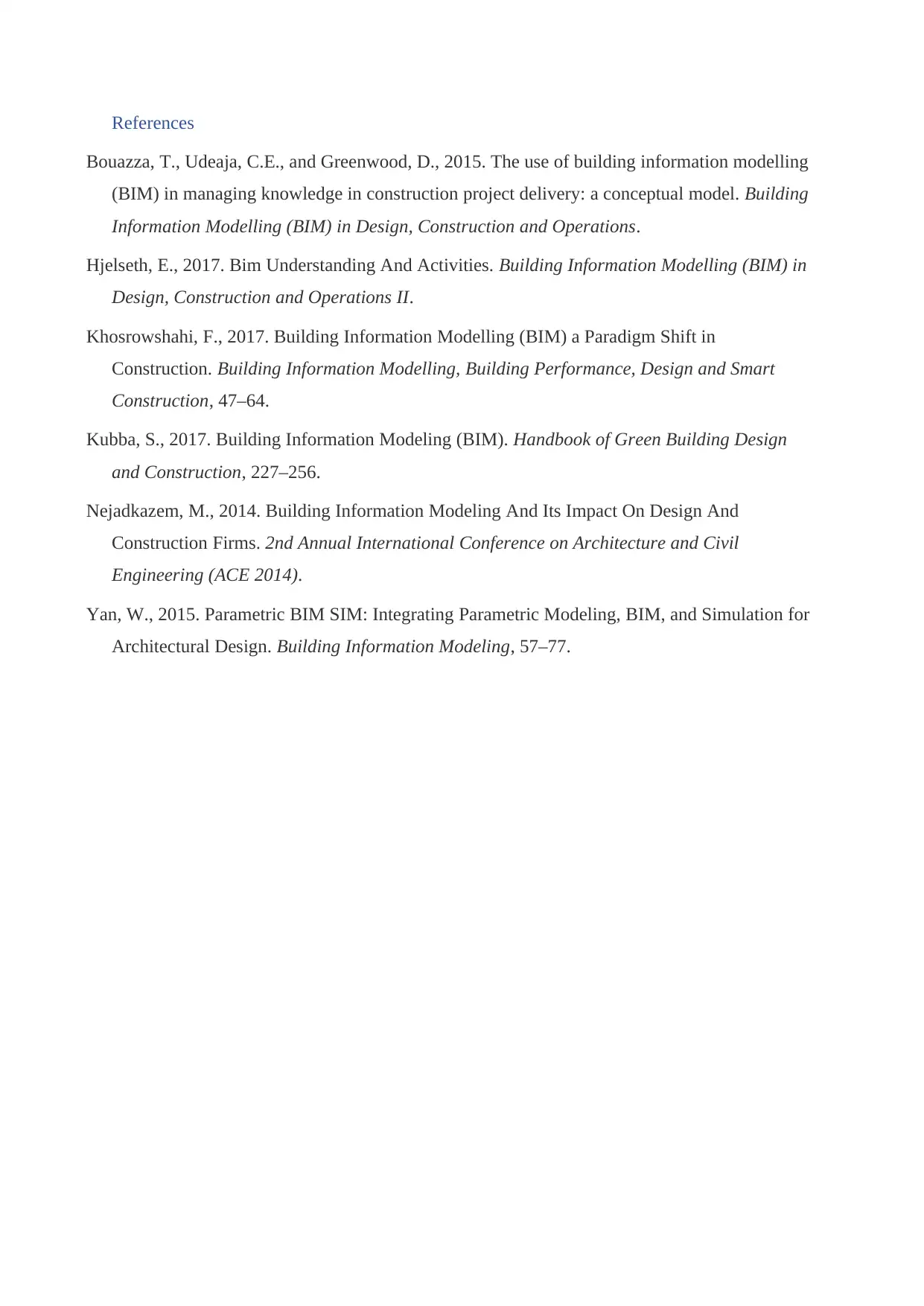BIM Implementation: Impact on Design and Construction Firms Research
VerifiedAdded on 2022/10/04
|3
|656
|14
Project
AI Summary
This research proposal investigates the impact of Building Information Modeling (BIM) on design and construction firms, focusing on how BIM enhances design, implementation, and project planning. The theoretical rationale explores BIM's potential to boost productivity through improved 3D presentations, easier interpretation of designs, and increased efficiency. The methodological approach involves interviews, questionnaires, and journal articles to analyze the effects of BIM implementation on firms of varying sizes. The research aims to determine BIM's suitability, benefits, and costs in civil engineering projects, emphasizing its role in detailed design presentations for successful project execution. References support the proposal's arguments, highlighting the significance of BIM in modern construction practices.
1 out of 3










![[object Object]](/_next/static/media/star-bottom.7253800d.svg)